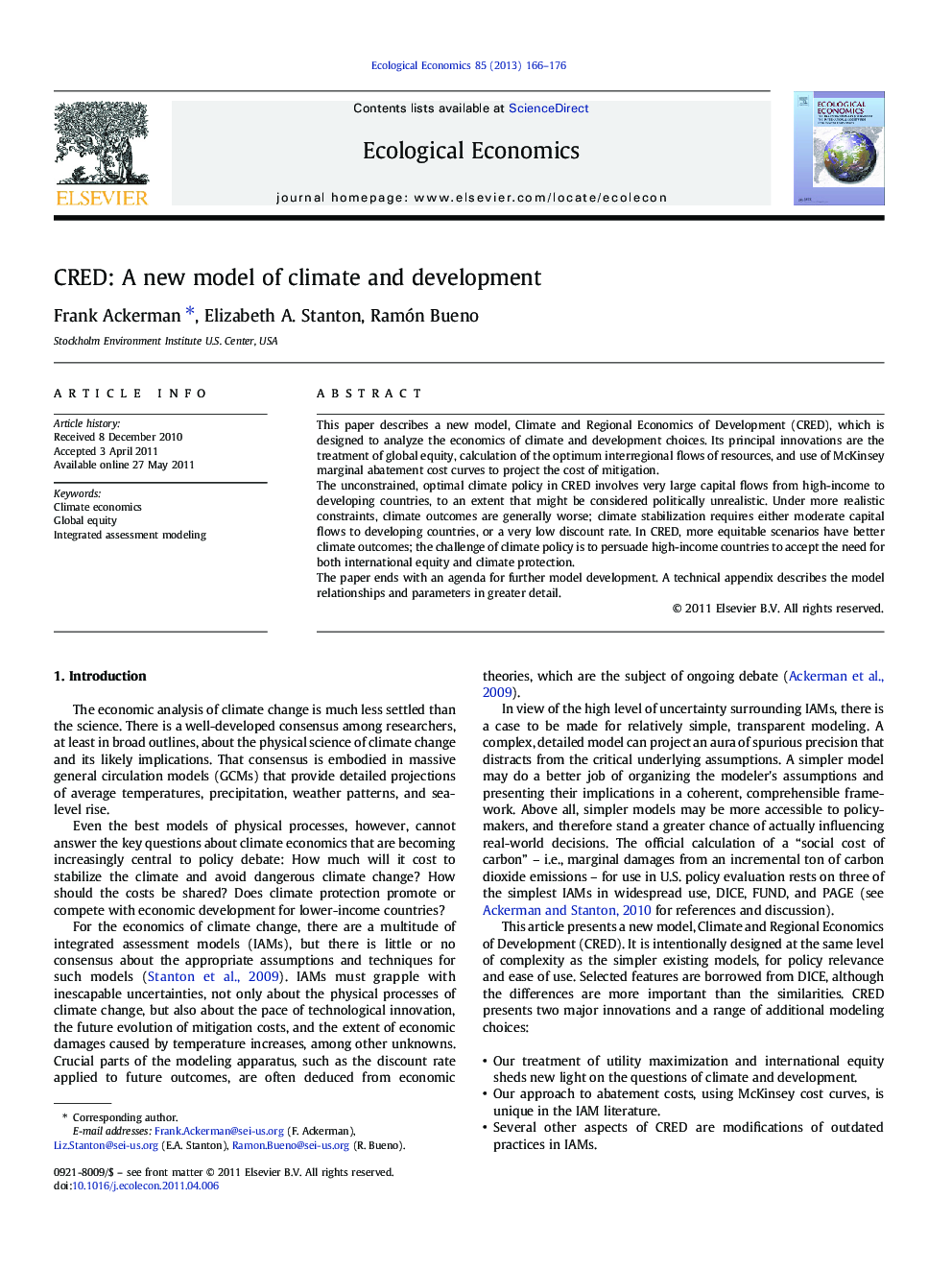| Article ID | Journal | Published Year | Pages | File Type |
|---|---|---|---|---|
| 5050221 | Ecological Economics | 2013 | 11 Pages |
This paper describes a new model, Climate and Regional Economics of Development (CRED), which is designed to analyze the economics of climate and development choices. Its principal innovations are the treatment of global equity, calculation of the optimum interregional flows of resources, and use of McKinsey marginal abatement cost curves to project the cost of mitigation.The unconstrained, optimal climate policy in CRED involves very large capital flows from high-income to developing countries, to an extent that might be considered politically unrealistic. Under more realistic constraints, climate outcomes are generally worse; climate stabilization requires either moderate capital flows to developing countries, or a very low discount rate. In CRED, more equitable scenarios have better climate outcomes; the challenge of climate policy is to persuade high-income countries to accept the need for both international equity and climate protection.The paper ends with an agenda for further model development. A technical appendix describes the model relationships and parameters in greater detail.
Research highlights⺠We model utility maximization in an unequal, climate-constrained world. ⺠Large resource transfers from rich to poor improve welfare and climate outcomes. ⺠Resource sharing and/or a low discount rate are needed for climate stabilization.
